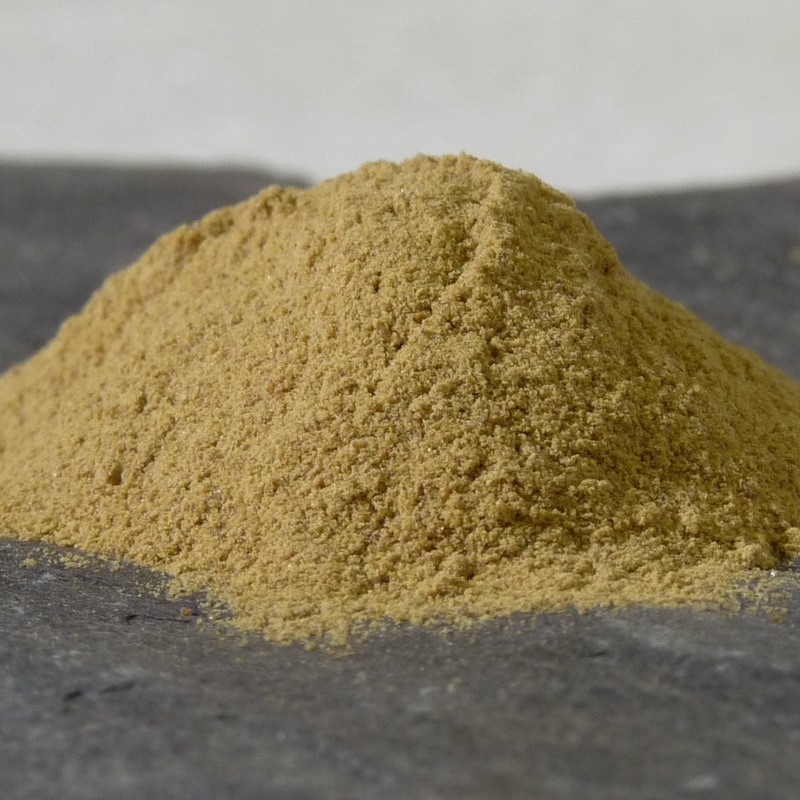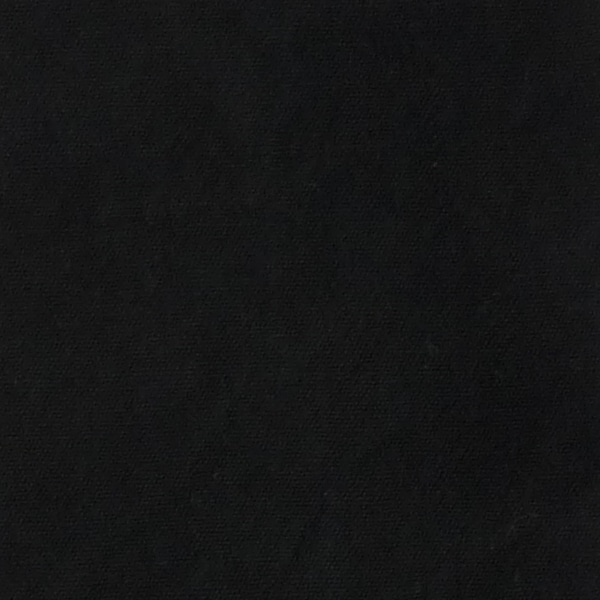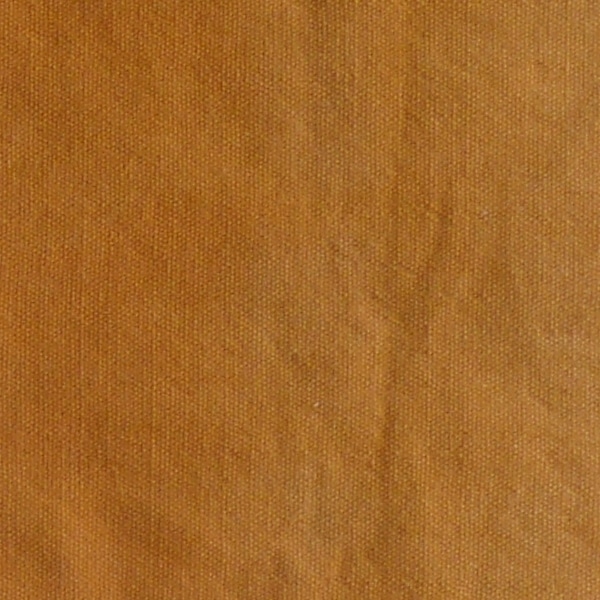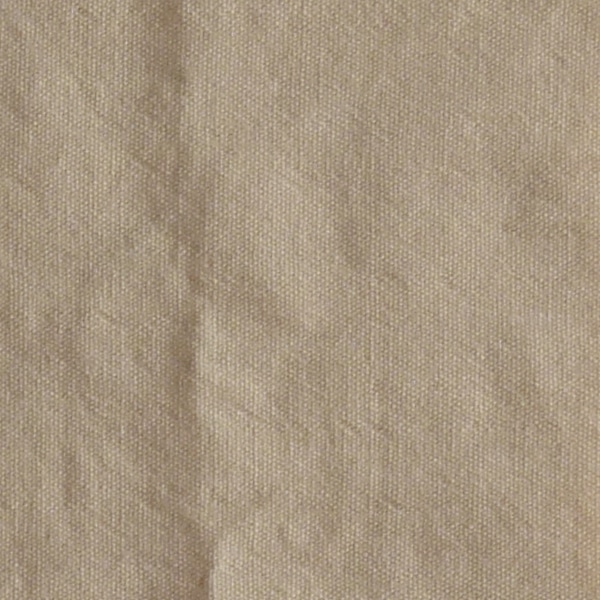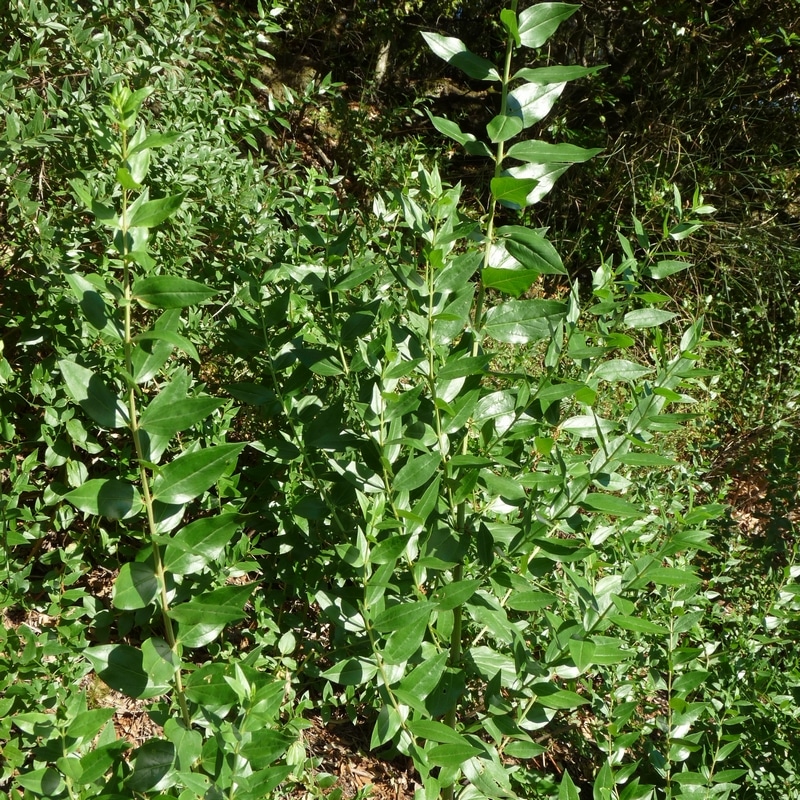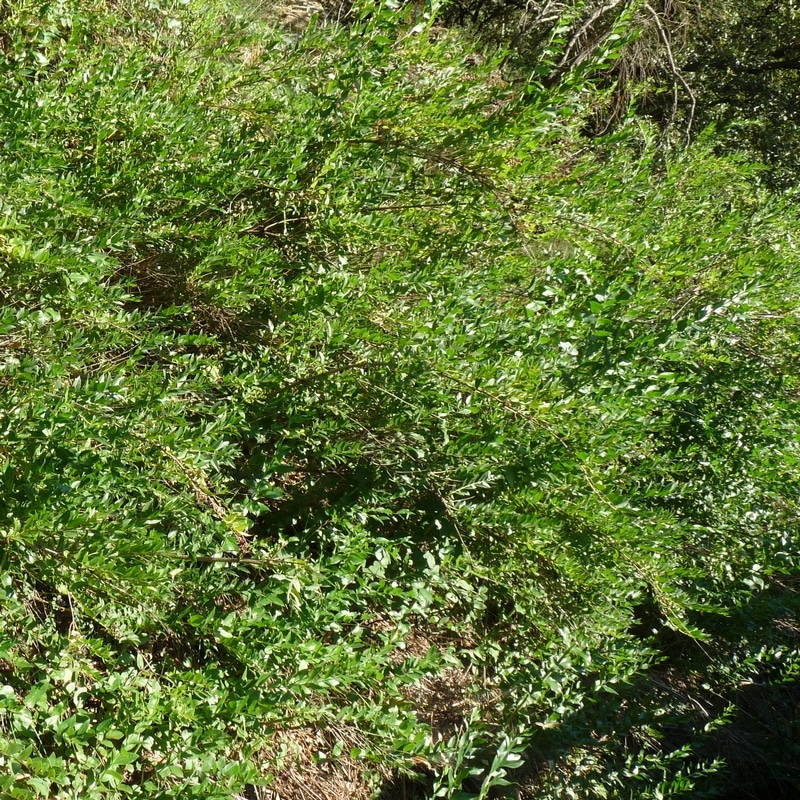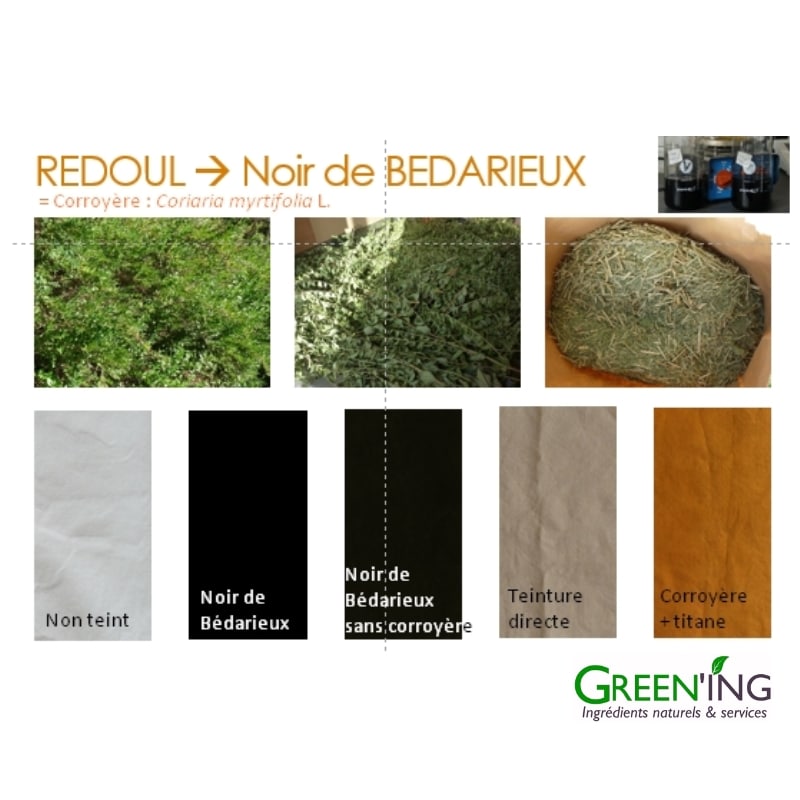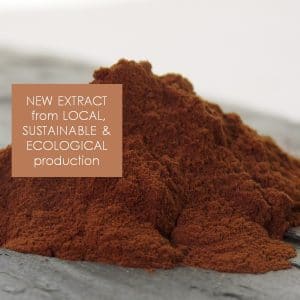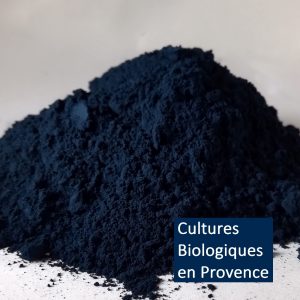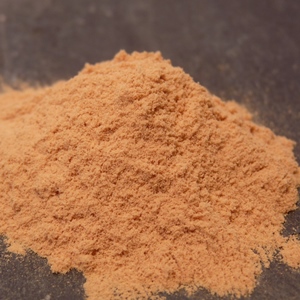The coriaria or redoul extract Occitania is manufactured from local organic raw materials.
This 100% natural dye is prepared from the aerial parts of the plant Coriaria myrtifolia L. This extract is rich in tannins of gallic type extracted with water, according to a sustainable & optimized process. This plant was widelay used by the dyers of the XVIIIth century (Paul Gout, Antoine Janot...). EXTRACT PRODUCED IN EXCLUSIVITY AND LIMITED QUANTITY
Main components : gallotannins around 15 % + flavonoids (quercetin and kaempferol glycosides).
Uses :
Natural dye & textile printing : this plant extract allows to dye any type of fibers, mordanted or not. The gallotannins can bind directly on the cellulosic fibers. Indicative shades depending on the recipe and mordant : beiges, browns ("fauves") (no mordant or aluminum), grey & blacks in the presence of iron, orange in the presence of titanium. This plant was used in the preparation of the "Noir de Bédarieux", our city.
This extract can be used in the historical recipes presented in the book Paul Gout's 157 colours.
Other uses : Tannery.
The plant :
The Coriaria myrtifolia L.) is a common species in the South of France and Catalonia. It is a shrub of 2-3m, present along paths and rivers, that has leaves similar to myrtle.
CAUTION: the fruits of this plant are very toxic and can sometimes be confused with blackberries. The literature also mentions that the aerial parts are toxic.
We have carried out research and analyzes which show that the most toxic parts are the seeds (the fruit pulp is much less so).
Our extract is made from material containing no fruit, according to an optimized process and our analyzes show that toxic molecules are only detected in the extract in trace amounts.
Historical uses and "Noir de Bédarieux"
The coriaria or redoul has been known and used since the Middle Ages in the South of France and in Catalonia. Narbonne and Montpellier were the largest centers of importation of coriaria from Catalonia to Languedoc. During the first half of the 14th century, the city of Montpellier, the main center of importation, was gradually overtaken by Narbonne.
The name of this plant comes from the Latin corium, indicating its use for skin tanning, its first use.
Redoul is the basis of one of the technical innovations of the Languedoc and Catalan cloth dyers of the Middle Ages: it was used to obtain a beautiful black by giving a second dye with tannins and iron salts to a cloth that had already received a "foot" of pastel which could, in this case, be noticeably less intense.
Closer in times, books on the chemistry of dyes from the 19th century describe the production of Noir de Bédarieux, of which redoul is the main ingredient. GREEN'ING being installed near Bédarieux, it was obvious for us to bring this color back to life.

